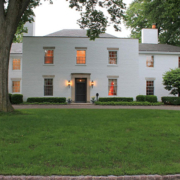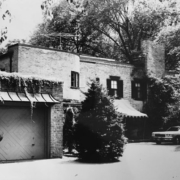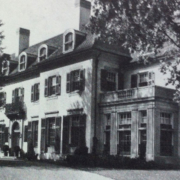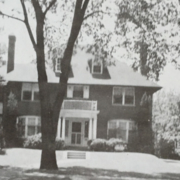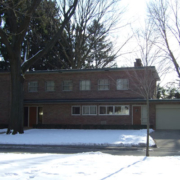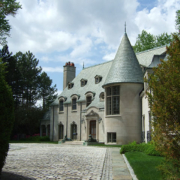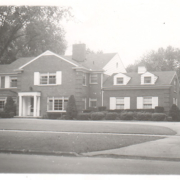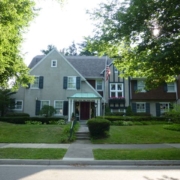Historical Architecture of Grosse Pointe – 22 Lee Gate Lane, aka the Hudson Tannahill House.
Hugh Tallman Keyes was a prolific designer of fine homes in the Grosse Pointes and was arguably one of the most diverse architects to work in the community. His work at 22 Lee Gate Lane was one of his signature projects, and, at the time, was built to contain one of the greatest private art collections in the world.
He studied architecture at Harvard University where his drawings won an honorable mention in the Intercollegiate Architecture Competition (the most important event in the collegiate architecture world), and he went onto to work with C. Howard Crane and Albert Kahn.
During his long and distinguished career Keyes built many significant houses in Grosse Pointe and Bloomfield Hills. One of his ‘principal works’ was the Hudson Tannahill House, located at 22 Lee Gate Lane, Grosse Pointe Farms. The 5,490 sqft home was built in 1947 for Robert Hudson Tannahill, a renowned art collector in Detroit, nephew of department store king Joseph L. Hudson and a nephew of Eleanor Ford, wife of Edsel.
Tannahill’s collection centered on 19th and 20th century artists including Paul Cézanne, Edgar Degas and Van Gogh amongst others. He began donating pieces of art to the DIA in 1926, and would go on to donate over 475 items during his lifetime. Upon his death, in 1969, the museum received an additional 557 works valued at approximately $13m.
In 1947 Tannahill commissioned Keyes to build a home on Lee Gate Lane to accommodate his extensive art collection. His search for an architect who could design a home to match the quality of his art, lead him to Keyes. The architect was considered to be one of the most versatile designers of the period and it was a testament to his skills to create a home for such a prestigious client.
The five-bedroom house is the earliest example of what would become Keyes signature ‘white brick’ Regency style. The white brick construction was developed with durability, security and beauty in mind and was built like a museum. The large windows let in an abundance of light, with the attached glass conservatory overlooking Lake St. Clair.
The exterior of the house has a strong symmetrical face, a hipped roofline (partially concealed by a parapet, which gives the appearance of being flat) and a slate roof. Inside the floors and ceilings are solid concrete, parquet flooring is a feature of nearly every room, while the fireplaces feature imported antique mantels. A 5-foot-tall painting – Women Seated in an Armchair – that Tannahill called “the mistress of the house” – along with several other works by Picasso decorated the stairwell. A Renoir nude was the main feature in the living room and a Matisse still life hung over the dining room table.
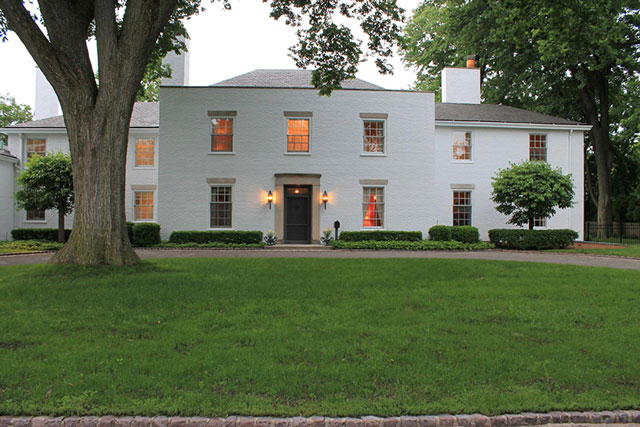
 At the time of the build Tannahill was reported to becoming increasingly “reclusive and protective of his art”, and despite the house resembling a museum he seldom showed his collection. He enjoyed being surrounded by the beauty of his paintings.
At the time of the build Tannahill was reported to becoming increasingly “reclusive and protective of his art”, and despite the house resembling a museum he seldom showed his collection. He enjoyed being surrounded by the beauty of his paintings.
Tannahill resided at Lee Gate Lane up until his death in 1969.
Despite the house being built like a bunker, which was meant to stop the spread of fire and protect his art, the roof of the house was destroyed by fire on November 14, 2014. It is currently being restored.
Keyes, like Tannahill, remains relatively unknown today. However, both contributed wonderful lasting legacies to the Metropolitan area. Tannahills gifts to the DIA are some of the most recognizable and highly prized paintings at the museum. While Keyes work around the Grosse Pointe communities still exists and serves as a testament to his talent as an architect.
Written by Katie Doelle
Copyright © 2015 Katie Doelle

